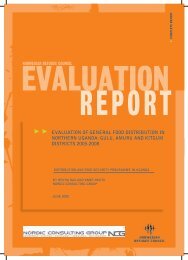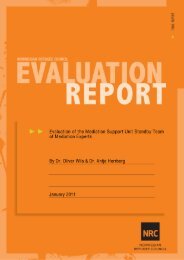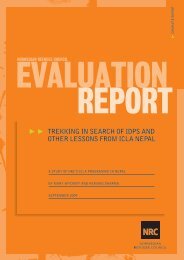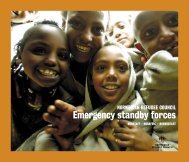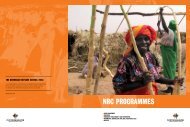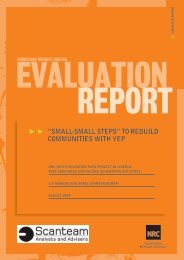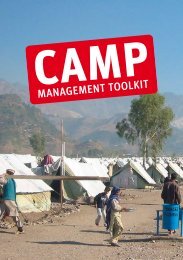Download full report - English version - ProAct Network
Download full report - English version - ProAct Network
Download full report - English version - ProAct Network
You also want an ePaper? Increase the reach of your titles
YUMPU automatically turns print PDFs into web optimized ePapers that Google loves.
ANNEX V<br />
SHELTER ENVIRONMENTAL CHECKLIST<br />
Introduction<br />
Shelter projects use local and imported materials. The choice of materials together<br />
with other factors can have an impact on the local environment. This simple checklist<br />
aims to serve as a reminder of key points to consider when setting up or following a<br />
small scale shelter project.<br />
How and when to use this tool<br />
This tool can be used at the planning stage of any rural shelter project, or at any<br />
subsequent stage of the construction process during site visits. This particular tool has<br />
been designed specifically for the Burundian context and should be adapted to suit<br />
local needs.<br />
General Key Considerations Answer / Tick<br />
Site<br />
Is it a sensitive site?<br />
How was it selected?<br />
Ventilation Is the building adequately ventilated?<br />
Lighting Is the building adequately lighted?<br />
Drainage Has drainage been considered in the design?<br />
Will it cause local erosion?<br />
Water<br />
Where is the nearest water supply?<br />
Is it sufficient?<br />
Waste<br />
What happens to waste building materials?<br />
Material Key Considerations Answer / Tick<br />
Adobe bricks<br />
Burnt bricks<br />
Where does the mud come from?<br />
How are the bricks produced?<br />
Is it legal?<br />
Does is impact the local landscape?<br />
Has the topsoil been used or returned?<br />
Have the excavation pits been secured?<br />
Are they adequately protected from moisture?<br />
Have alternatives been considered?<br />
Who provides them?<br />
Where does the clay come from?<br />
How are they transported?<br />
How are they burnt?<br />
What technique is used and is it efficient?<br />
What fuel is used?<br />
Does the fuel come from legal and<br />
sustainable sources?<br />
Do they correspond to local building<br />
techniques?<br />
Can the technique be improved or can<br />
alternative suppliers be found?<br />
53




